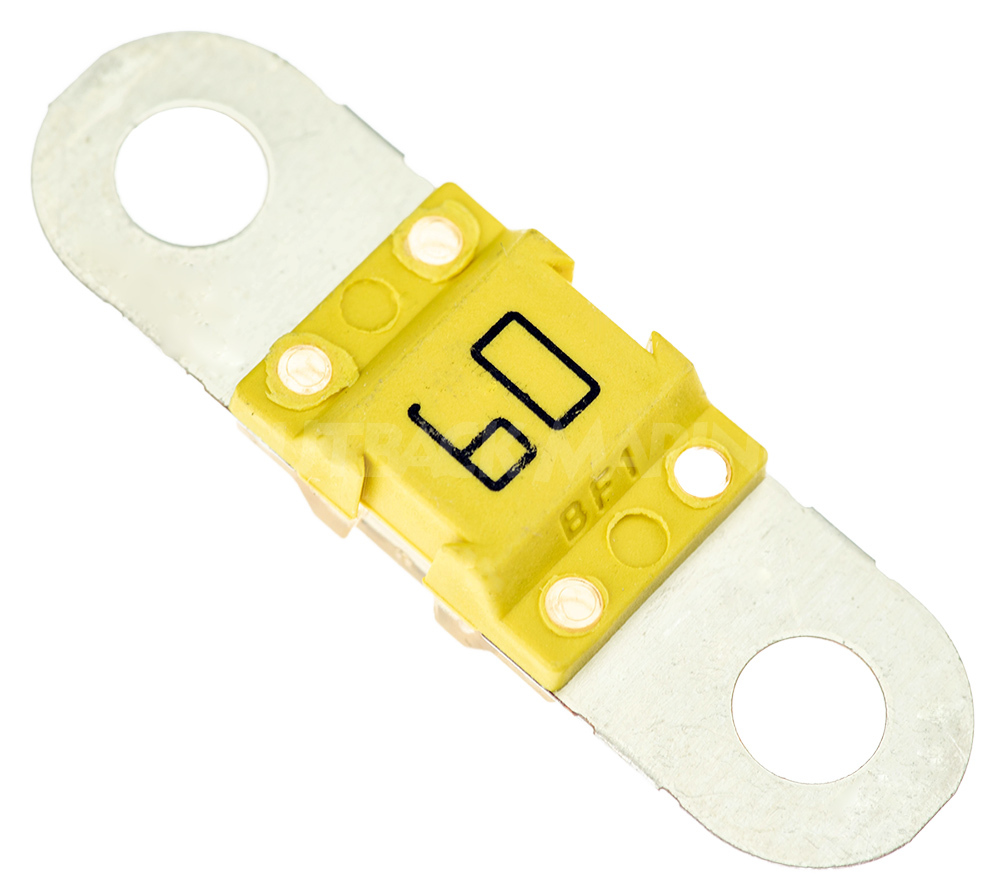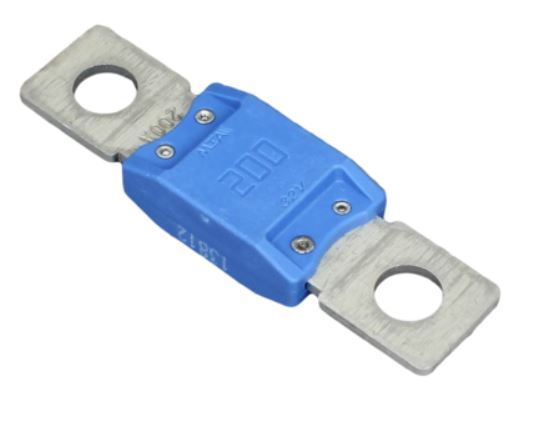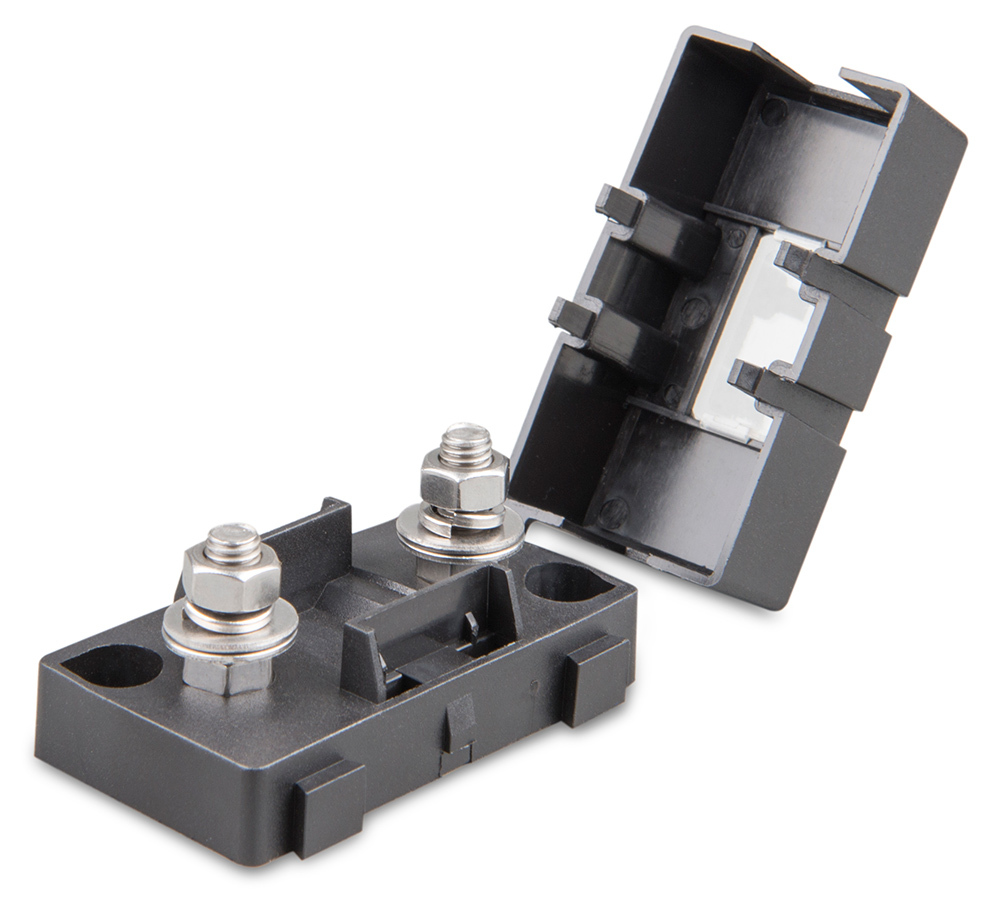Yep I've got a Class T fuse at the battery positive terminal, and also one mid-string between battery cells. This discussion is about using an MRBF on the busbar to supply a load circuit at say 50A, at a maximum voltage of 57.6V. What do you think for that application?
<p>Designed for the most demanding environment to provide high current protection for the tightest space constraints. Suitable for main and auxiliary circuit protection such as alternator outputs, starter motor inputs and accessory circuits.</p>

www.eaton.com
"Interrupt Rating :10000 AMP @ 14Vdc 5000 AMP @ 32Vdc 2000 AMP @ 58Vdc"
MRBF is rated better than most fuses used for branch circuits.
Wearing the hat of the safety guys from places I worked (where "qualified electrical workers" like me were forbidden to flip a circuit breaker) I'd say the fuses ought to have a cover over them. That way if the fuse splatters you are protected from molten metal.
Ideally, the circuit this fuse protects has 46' of 8 awg wire, which would limit short circuit current at 58V to 2000A.
If there is a short circuit, it will be interrupted by fuses blowing. In the event MRBF goes first and short circuit current is well in excess of 2000A, it could sustain an arc and produce a blast. The class T fuse would blow in its own time and stop current.
What we would like is for highest rated class T to blow first and interrupt current before anything else turns into plasma and forms an arc blast. Class T fuses are known as "current limiting" because, while they don't actually limit current, they open fast enough to protect weaker components from some excessive currents. In a 60 Hz AC system, if a breaker is capable of holding together until a 20,000A fault current is extinguished by zero crossing within one 16 millisecond cycle, having a class T fuse will interrupt a 200,000A fault current fast enough to prevent catastrophic failure.
Unfortunately, that feature doesn't extend down to interrupting a 20,000A fault fast enough for a 2000 AIC component. The fault current let-through chart rises amp for amp toward 20,000A, only diverges and provides extra protection at higher current.
Page 4, a 200A class T fuse interrupting 20,000A would let through the equivalent of 7000A
One forum member made a LiFePO4 golf-cart battery, then accidentally shorted the output. It didn't blow the class T fuse but it did splatter a busbar (apparently due to resistive contact), which was fortunately covered. Metal debris was everywhere and the cell terminal melted off.
So that's why I say have a cover over the fuse.
Looks like class K5 fuses are available from 1A to 200A and have 20kA AIC up to 250 VDC. But would require separate fuseholder unlike MRBF.
McMaster-Carr is the complete source for your plant with over 595,000 products. 98% of products ordered ship from stock and deliver same or next day.

www.mcmaster.com






